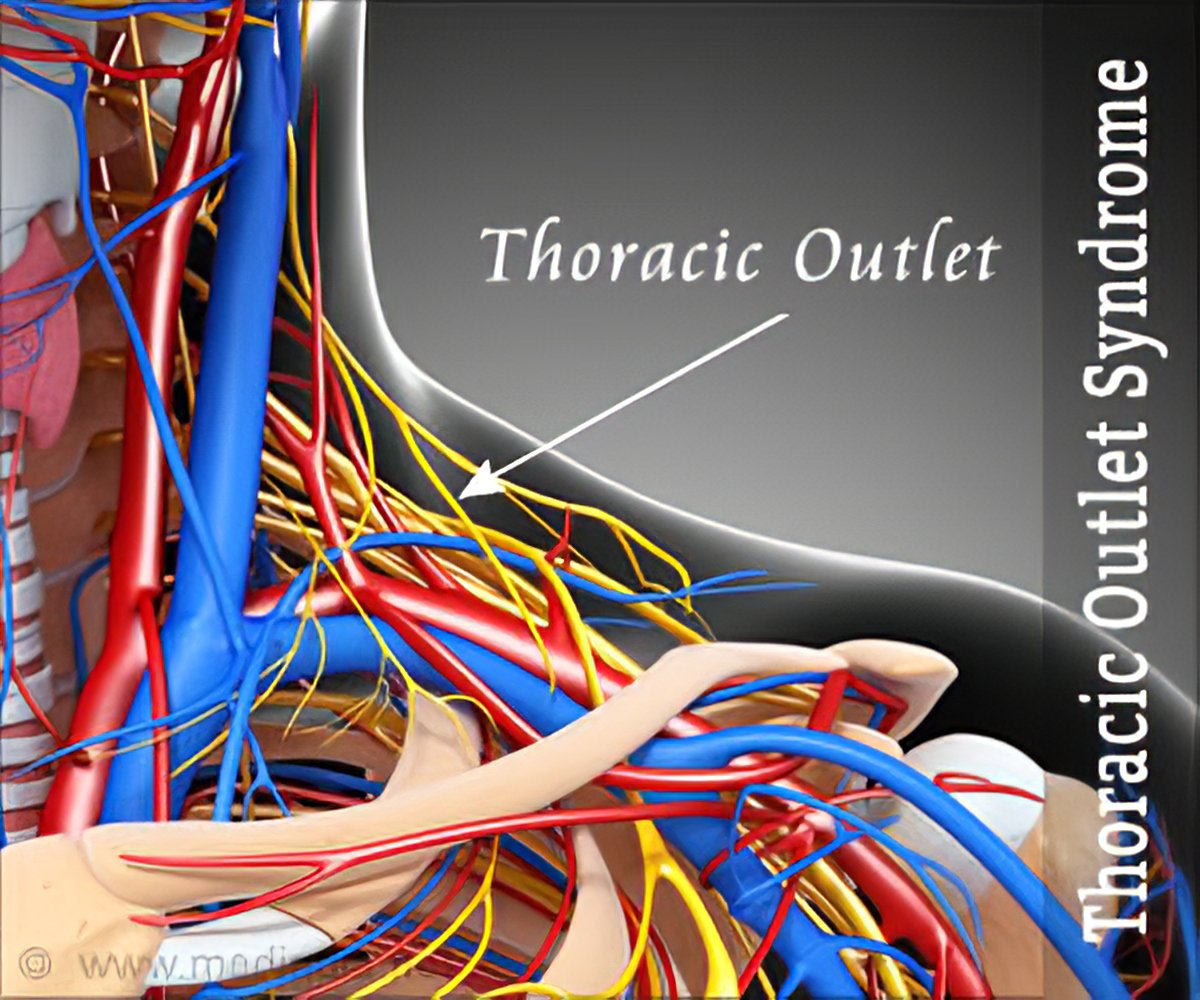

X-rays can also help to rule out other conditions that could be causing your symptoms. Your doctor may order a chest X-ray, which may reveal an extra rib (cervical rib). Doctors may use this test to see if you have vascular thoracic outlet syndrome or other vascular problems. It's often the first imaging test used to help diagnose thoracic outlet syndrome. An ultrasound uses sound waves to create images of your body.

To confirm the diagnosis of thoracic outlet syndrome, your doctor may order one or more of the following tests: Your doctor will likely ask about your medical history and symptoms, as well as your occupation and physical activities. Understanding which positions and movements trigger your symptoms can help your doctor identify thoracic outlet syndrome. Your doctor may test range of motion and try to reproduce your symptoms by asking you to move or lift your arms or turn your head. Your doctor will perform a physical examination to look for external signs of thoracic outlet syndrome, such as a depression in your shoulder, a bony abnormality above the collarbone, swelling or pale discoloration in your arm or abnormal pulses. The surgery will depend on the cause of the compression. Surgery may involve removing a portion of an abnormal first rib or releasing a muscle that joins the neck and chest. If non-surgical treatment does not alleviate your symptoms, your doctor may advise surgery. Surgical Treatment for Thoracic Outlet Syndrome Lifestyle changes: You are advised to avoid strenuous activities and other activities that increase the risks or symptoms. Weight loss: You are advised to reduce your weight if you are considered overweight. Non-steroidal anti-inflammatory medications: NSAIDs can reduce pain and swelling Maintaining proper posture can help you stand, sit and walk straight. Physical therapy: Exercises can decrease the pressure on the nerves and blood vessels and strengthen the muscles surrounding the shoulder. Non-surgical Treatments for Thoracic Outlet Syndrome The treatment of thoracic outlet syndrome involves both non-surgical and surgical approach. Treatment Options for Thoracic Outlet Syndrome Nerve conduction velocity study may be suggested to check the conduction of electrical signals in the nerves. Your doctor may also recommend blood tests and electromyogram evaluation. You may be advised to have a chest X-ray, MRI or CT scan. To evaluate your condition, your doctor will perform a physical examination and collect your medical history. The symptoms of thoracic outlet syndrome may include numbness and pain in the neck, shoulder, and arm, tingling or burning sensation, weakness, limited range of movement of arms, and swelling or redness of your arm, color changes to the arm or hand, and a weak hand grip. Thoracic outlet syndrome can result due to injury, tumors that press nerves, poor posture that compresses nerves, weight lifting, anatomical defects such as an elongated C7 transverse process, anomalous tissue overgrowth, upper thoracic neurovascular compression, costocoracoid tendon, and subclavian muscle hypertrophy to name a few. There are 3 types of thoracic outlet syndrome: It generally occurs within the age group of 20 to 60 years and is more common in females than in males. When this passageway becomes compressed, the condition is termed as thoracic outlet syndrome. This small area contains many blood vessels, nerves, and muscle. The thoracic outlet is a small passageway leading from the base of the neck to the armpit and arm.


 0 kommentar(er)
0 kommentar(er)
